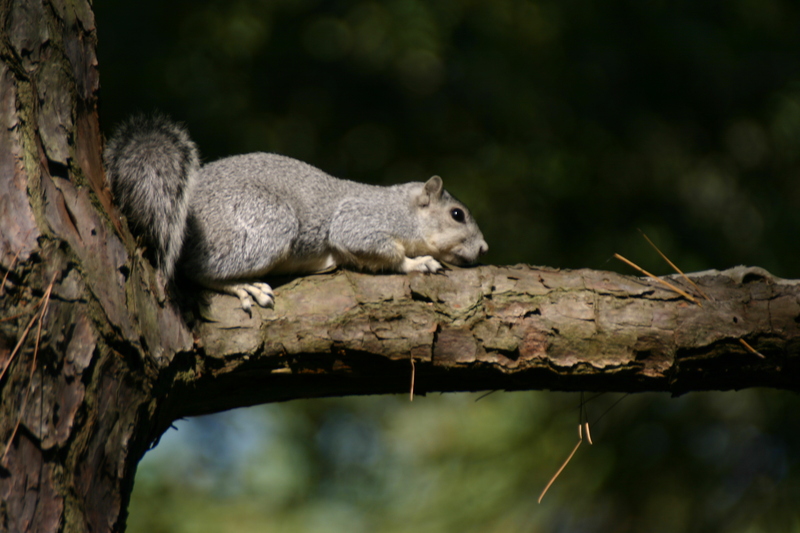ERROR : Server Busy(-1105)
ERROR : Server Busy(-1105)
Delmarva Fox Squirrel (Sciurus niger cinereus)
[Photo] Delmarva fox squirrel, 2005 Chincoteague Brian Gratwicke. Source: http://en.wikipedia.org/wiki/Image:Sciurus_niger1.jpg
Endangered Delmarva Fox Squirrel
Location: The Delaware, Maryland & Virginia (Delmarva) Peninsula
The Wildlife Advocacy Project is educating the public, through media coverage, about the threats to the endangered Delmarva fox squirrel from intensive development on the Eastern Shore of Maryland. On behalf of a local grassroots activist and Defenders of Wildlife, Meyer & Glitzenstein has brought a lawsuit challenging the U.S. Fish and Wildlife Service's decision to allow increased private development of dwindling fox squirrel habitat, without following the requirements of either the Endangered Species Act or the National Environmental Policy Act. The Fish and Wildlife Service's handling of the fox squirrel will impact hundreds of other species throughout the country since the Service has announced it intends to use the fox squirrel project as a "model" for managing other endangered species on the East Coast.
SOME FACTS ABOUT THE DELMARVA FOX SQUIRREL:
Rare squirrels, twice the size of the average grey squirrel and listed as endangered species since 1967, may be eradicated by proposed construction on Maryland's Eastern Shore in violation of the Federal Endangered Species Act. The Delmarva fox squirrel, formerly found throughout the Delaware, Maryland and Virginia ("Delmarva") Peninsula, now is found almost exclusively in four counties of the Eastern Shore (Queen Anne's, Dorchester, Kent and Talbot Counties) where increased development, construction, and suburban sprawl are displacing this slow moving animal. The fox squirrel -- which plays an important role in its ecosystem by distributing tree and other plant seeds -- is at greatest risk from cars and other vehicles.
The challenged development has been in dispute since 1997 when Meyer & Glitzenstein successfully sued the FWS for allowing construction without even requiring the developer to apply for an "Incidental Take Permit" (ITP) under the ESA, although the FWS acknowledged that the new development would require new roads which, in turn, would result in increased deaths of fox squirrels. Such ITPs may only be granted if the developer prepares a "Habitat Conservation Plan" (HCP) that will make up for the loss of individual members of the species by providing new protection for the species as a whole -- such as the preservation of additional habitat. After suit was filed, the FWS agreed that the developer must apply for an ITP and prepare an HCP. However, the government then had private meetings with the developer to produce a HCP -- the first of its kind in this region of the country and one that, according to the FWS, will be used as a "model" for other HCPs in the future. The final HCP purports to protect the species by requiring the developer to post "squirrel crossing signs" on roads.
Under the permit, the FWS is allowing the developer to kill as many as fifteen squirrels during the lifetime of the permit, when current population estimates range as low as between ten and forty squirrels. The FWS has also allowed the developer to use habitat which is immediately adjacent to the busiest highway in the area for a "mitigation" area, although the world's leading fox squirrel expert, Dr. Vagn Flyger, submitted an affidavit explaining that this site "is inadequate to support a healthy, viable fox squirrel population," and is "of no conservation benefit" to the squirrel.
This is the first HCP being legally challenged on the East Coast. Throughout the Western United States, HCPs have been described by conservationists as "sweetheart deals" that do little to protect endangered species and much to lessen the liability of developers who kill or otherwise "take" endangered wildlife. Public opposition to this, and similar projects, is absolutely critical to stemming the tide of such deals at the expense of endangered and threatened wildlife throughout the country.
Text Source: http://www.wildlifeadvocacy.org/programs/fox_squirrel.html |

